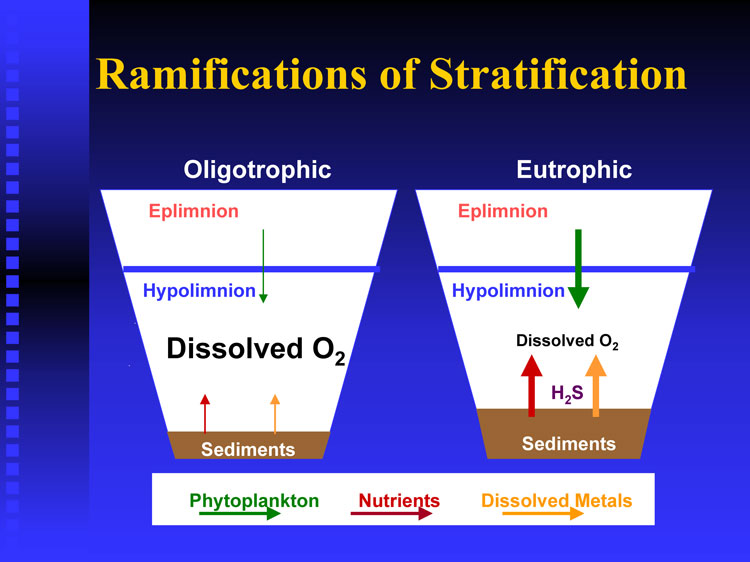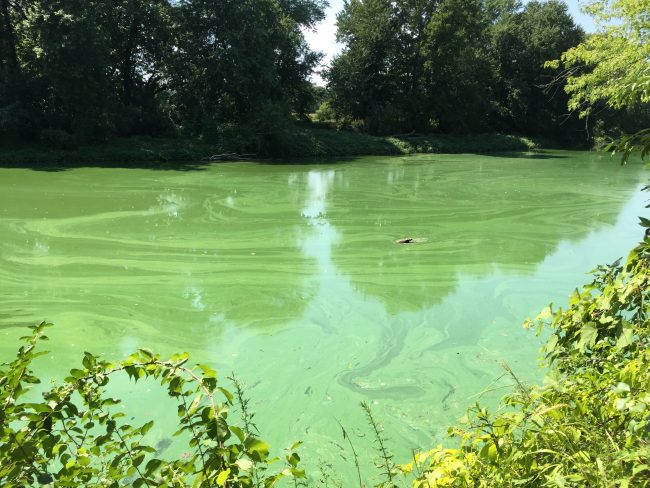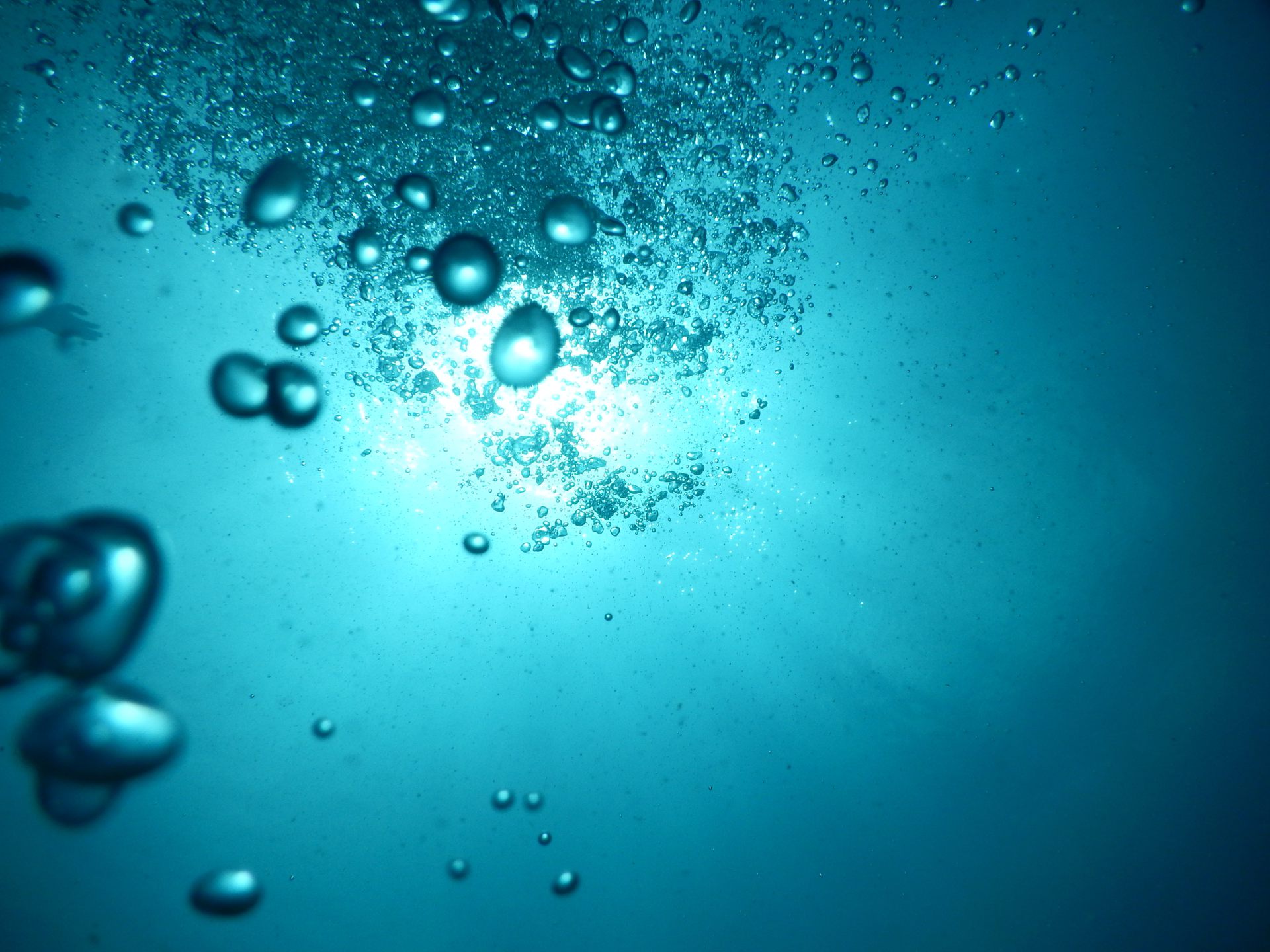Email Us
215.230.9325 or 877.230.9325
Email Us
215.230.9325
Pond & Lake Ecology
Overview of Pond & Lake Ecology
Nutrients (e.g., phosphorus, nitrogen, carbon, silicon, calcium, potassium, magnesium, sulfur, sodium, chloride, iron) are primarily transported to ponds and lakes via streamflow, surface runoff and groundwater, while sediments are mainly conveyed by streamflow and surface runoff. As streamflow and surface runoff enter a pond or lake, their overall velocity decreases, which allow transported sediments to settle to the pond or lake bottom. Many of these incoming nutrients may be bound to sediment particles and subsequently will also settle to the pond or lake bottom. Very small sediment particles such as, clays, may resist sedimentation and subsequently pass through the lake without settling.
Once within the pond or lake, water quality is further modified through a complex set of physical, chemical and biological processes. These processes are significantly affected by the pond’s or lake’s morphological characteristics (morphology). Some of the more important morphological characteristics of ponds and lakes are surface area, shape, depth, volume and bottom composition. In addition, the hydraulic residence time (i.e., the pond’s or lake’s flushing rate) also greatly affects these processes and is directly related to the pond’s or lake’s volume and the annual volume of water flowing into the pond or lake.
With respect to nutrients, phosphorus and nitrogen are generally considered the most important nutrients in freshwater ponds and lakes. Phosphorus and, to a lesser degree, nitrogen typically determine the overall amount of aquatic plants present. Aquatic plants adsorb and convert available nutrients into energy, which is then used for additional growth and reproduction. In ponds and lakes, aquatic plants are mainly comprised of phytoplankton (free-floating microscopic plants or algae) and macrophytes (higher vascular plants). The most readily available form of phosphorus is dissolved orthophosphate (analytical determined as dissolved reactive phosphorus), while ammonia (NH3-N) and nitrate (NO3-N) are the most readily available forms of nitrogen.
The transfer and flow of energy in ponds and lakes is ultimately controlled by complex interactions between various groups of aquatic organisms (both plants and animals). A simplistic diagram of these interactions among aquatic organisms is shown as Figure 1. In Figure 1, algae (phytoplankton) and aquatic macrophytes (plants) capture energy from the sun and convert this energy into chemical energy through the process known as photosynthesis. During photosynthesis, carbon dioxide, nutrients, water and captured sunlight energy are used to produce organic compounds (chemical energy), which are then used to support further growth and reproduction.
Energy continues to flow upward through the food web. Algae are primarily grazed upon by zooplankton. Zooplankton are tiny aquatic animals that are barely visible to the naked eye. Next, zooplankton serve as prey for planktivorous (plankton-eating) fish and larger invertebrates (macroinvertebrates). In turn, plankitvores are consumed by piscivorous (fish-eating) fish. Overall, these aquatic organisms (zooplankton, macroinvertebrates and fish) derive energy by breaking down organic matter through the process known as respiration. During respiration, organic matter, water and dissolved oxygen are converted into carbon dioxide and nutrients.
At the bottom of the food web (Figure 1), particulate organic waste products (excrement or feces) from aquatic organisms along with dead aquatic organisms settle to the pond or lake bottom and are subsequently feed upon by other organisms. Organisms that live or reside along the lake bottom are referred to as benthivores. After settling to the pond or lake bottom, dead organic materials and organic waste products are now called detritus. Some benthivorous fish (catfish and carp) and microorganisms (bacteria, fungi and protozoans) feed upon detritus. Aquatic organisms that feed upon detritus in ponds and lakes are referred to as decomposers. Decomposers obtain energy by breaking down detritus (dead organic matter) via the process of respiration. During decomposition, some of the nutrients are recycled back into pond or lake water and can now once again be used by algae and aquatic plants for growth and reproduction. Any unused detritus will accumulate and eventually become part of the lake sediments, thereby increasing the organic content of these sediments.

Figure 1
Ultimately, the amount of nutrients in lakes controls the overall degree of aquatic productivity (Figure 2). Ponds and lakes with low levels of nutrients and low levels of aquatic productivity are referred to as oligotrophic. Oligotrophic ponds and lakes are typically clear and deep with low quantities of phytoplankton and rooted aquatic plants. In these ponds and lakes, the deeper, colder waters are generally well-oxygenated and capable of supporting coldwater fish such as trout. Conversely, ponds and lakes with high nutrient levels and high levels of aquatic productivity are referred to as eutrophic. Eutrophic lakes are generally more turbid and shallower due to the deposition of sediments and the accumulation of detritus.
In some instances, the flow of energy through the aquatic food web may be disrupted. In hyper-eutrophic (highly eutrophic) ponds and lakes, aquatic productivity is extremely high and is dominated by very large numbers of a few, undesirable species. The phytoplankton community is typically comprised largely by blue-green algae during the summer months. Many species of blue-green algae are not readily grazed upon the zooplankton community. Under these conditions, the blue-green algae community is allowed to flourish due to the lack of predation, while the zooplankton community collapses. Decreases in zooplankton biomass in a pond or lake may in turn adversely affect the lake’s fishery. In addition, shallow lake areas may be completely infested with dense stands of aquatic macrophytes and dominated by common carp, catfish or other rough fish.

Figure 2
Benefits of Aeration
Learn more about why you should aerate your pond or lake
How AirLift Aerators Work
Learn how AirLift pond aerators & lake aeration systems work
The AirLift Advantage
Learn why AirLift pond & lake aerators are the best in the industry
AirPod Air Diffusers
Learn why our AirPod air diffusers are the most durable & reliable
Physical Address
1519 Broad Street
Perkasie, PA 18944
Payments & Mailing Address:
PO Box 605
Doylestown, PA 18901
Copyright © 2023 Hydro Logic - All Rights Reserved.




